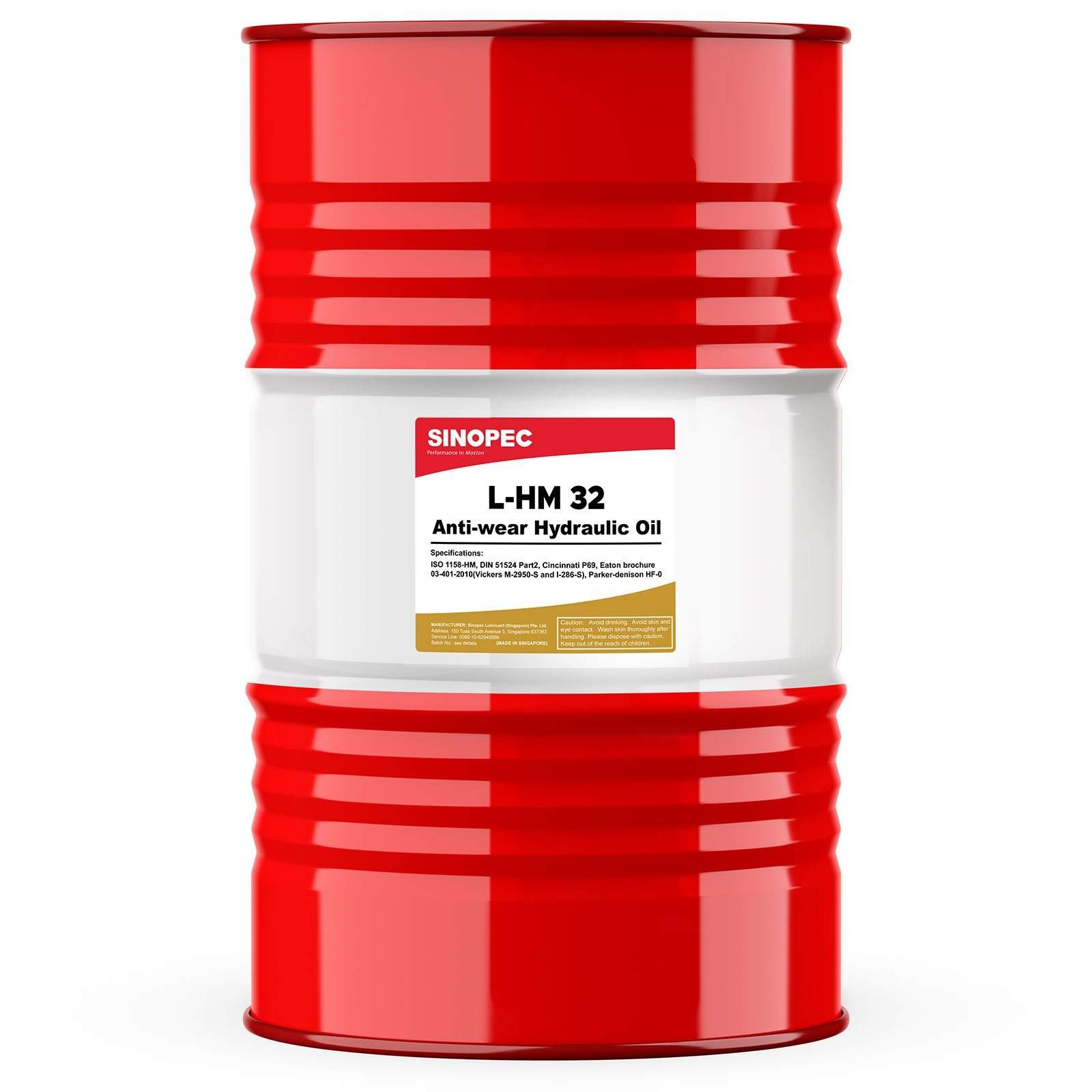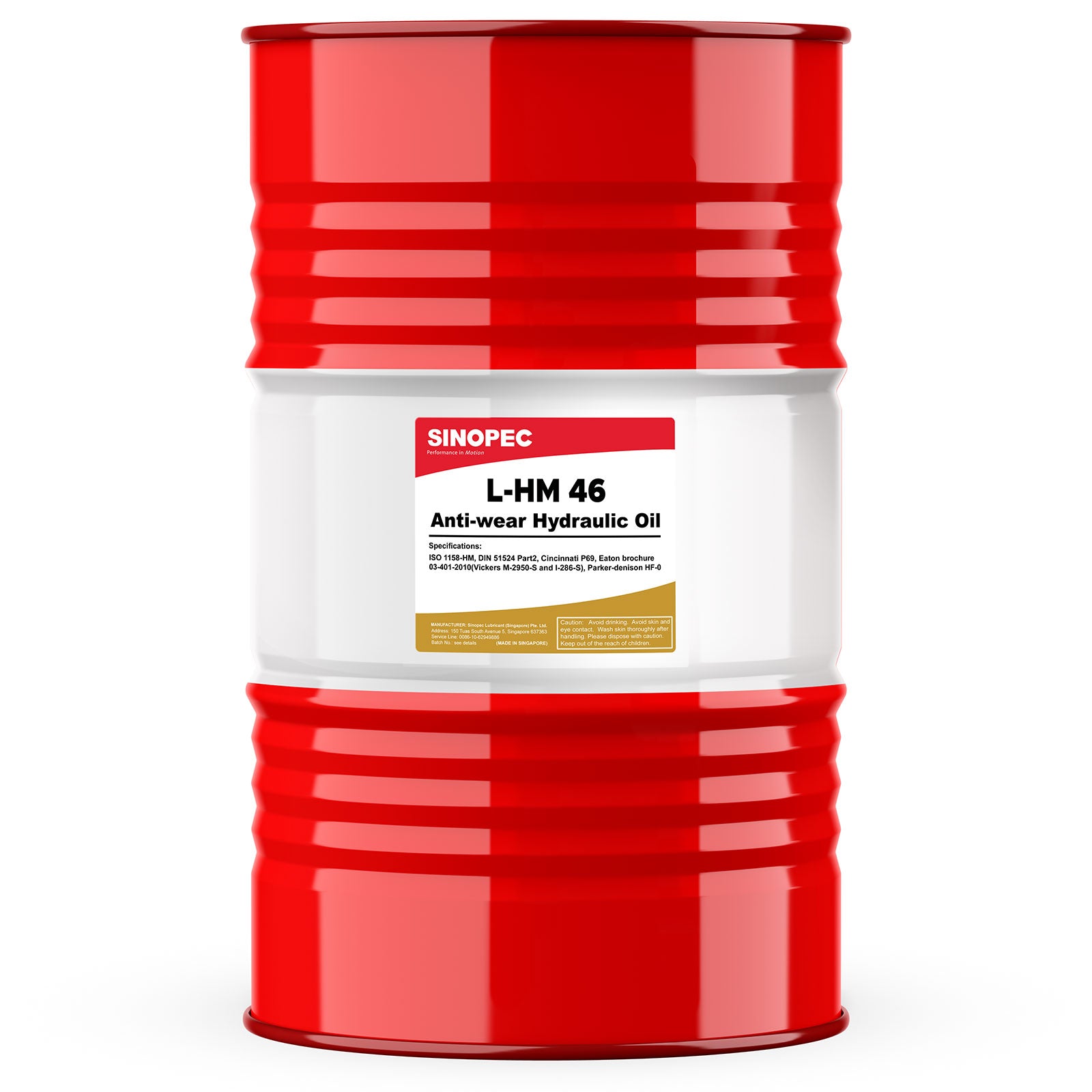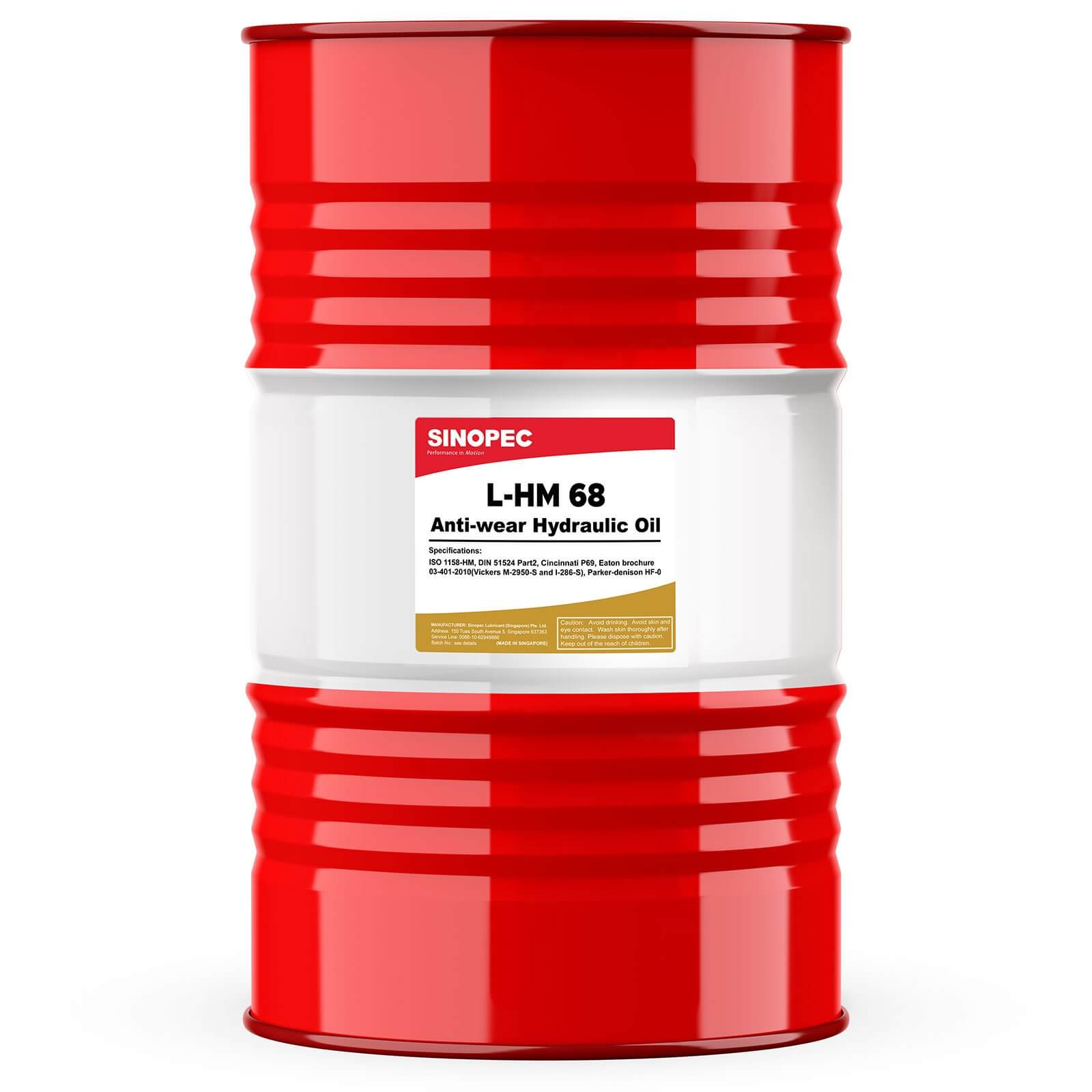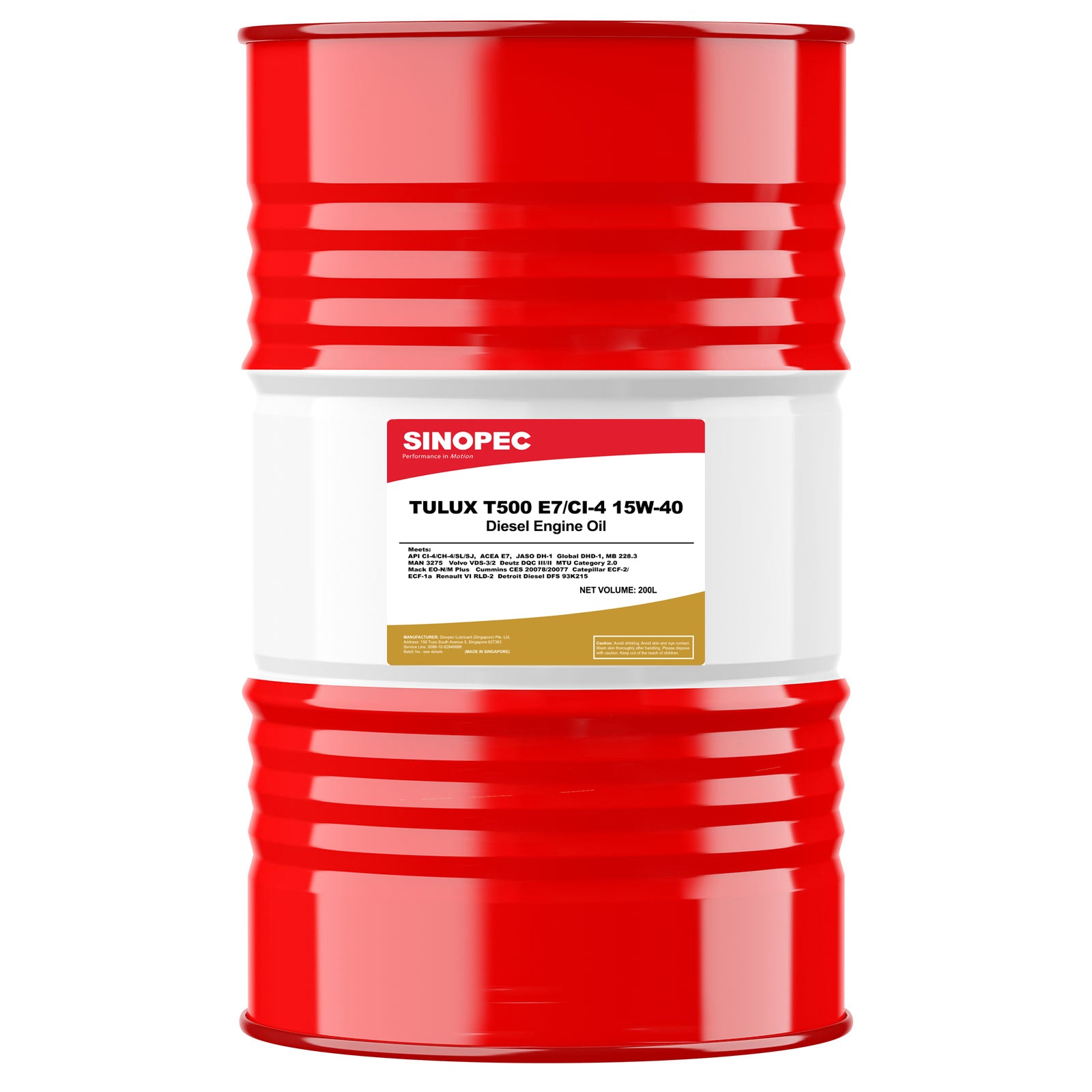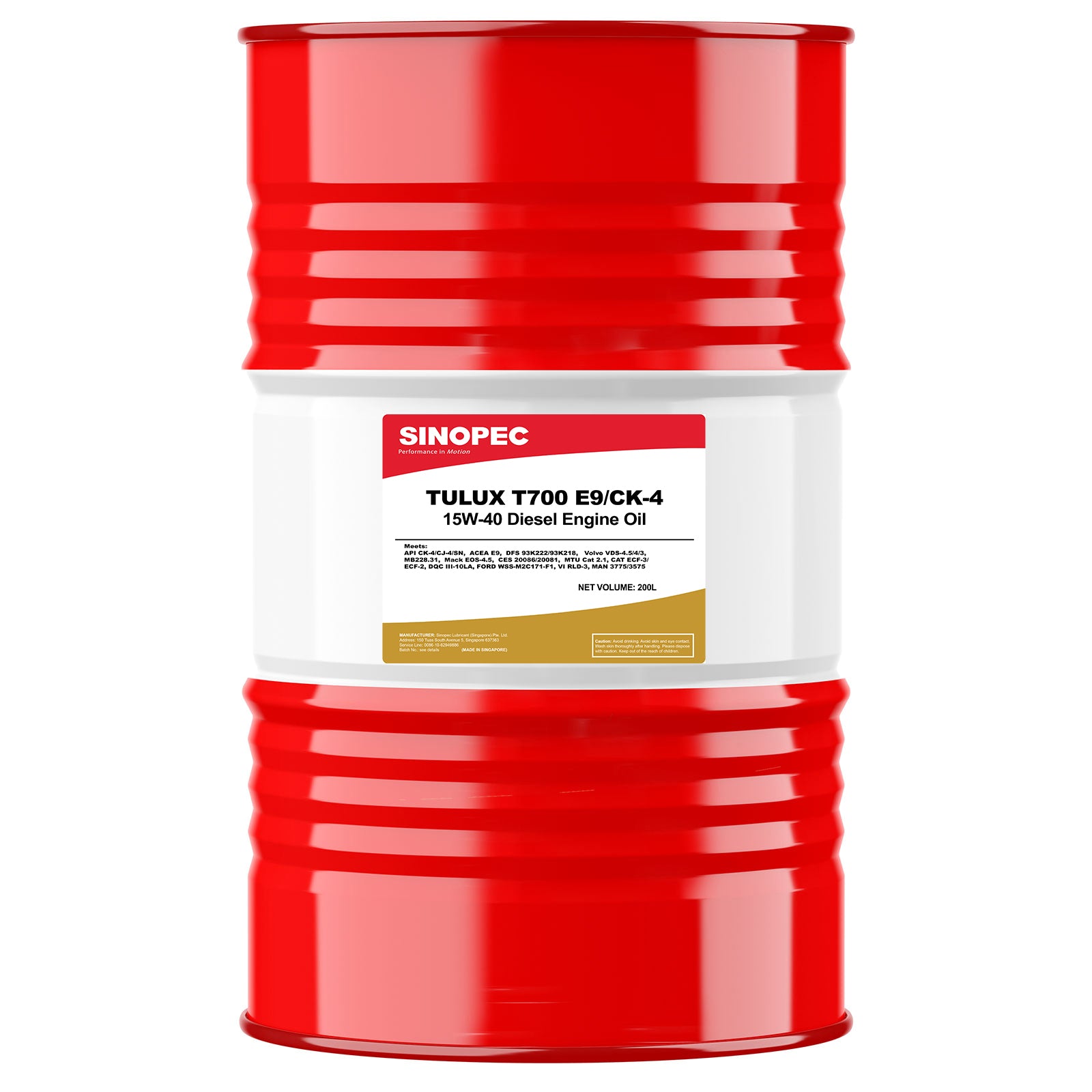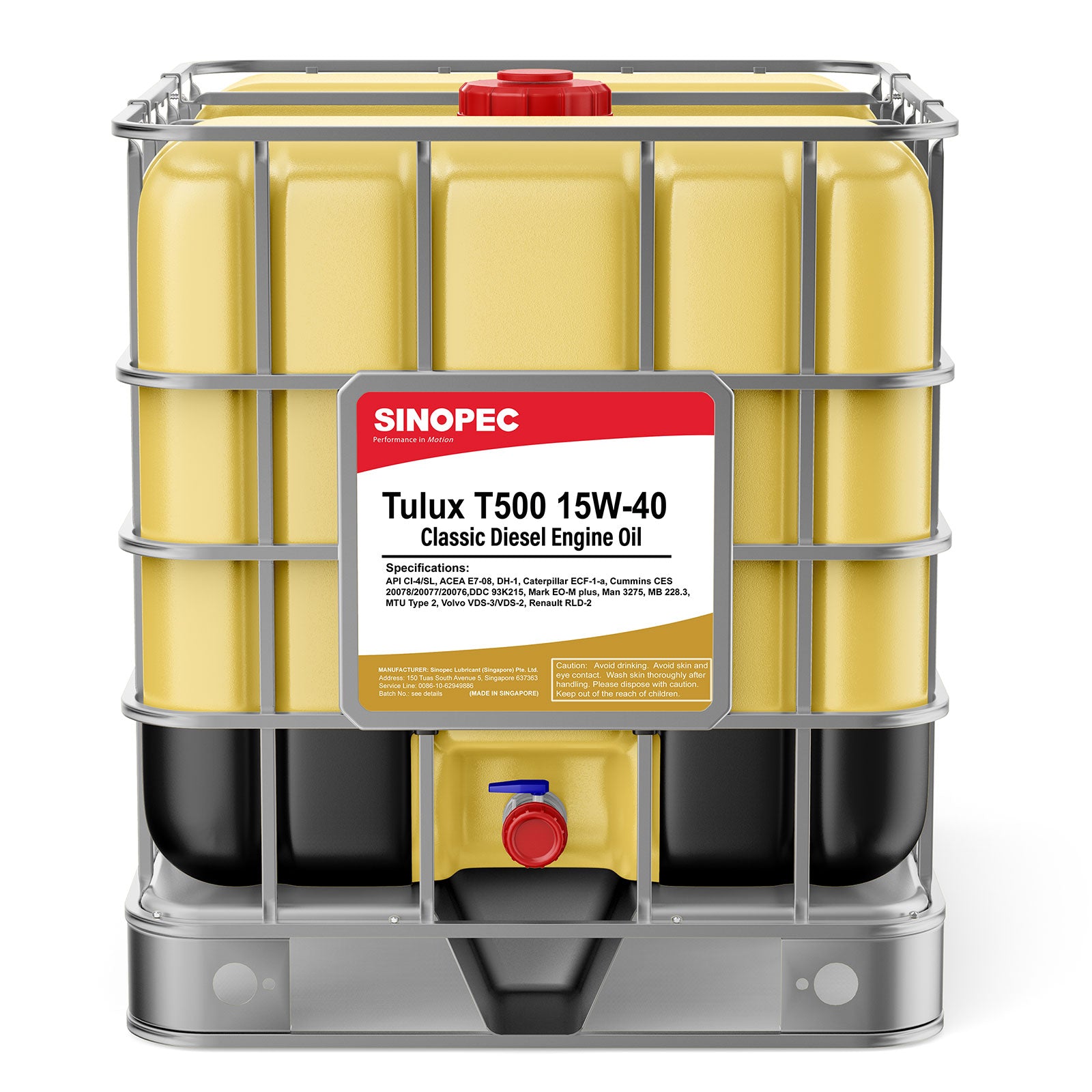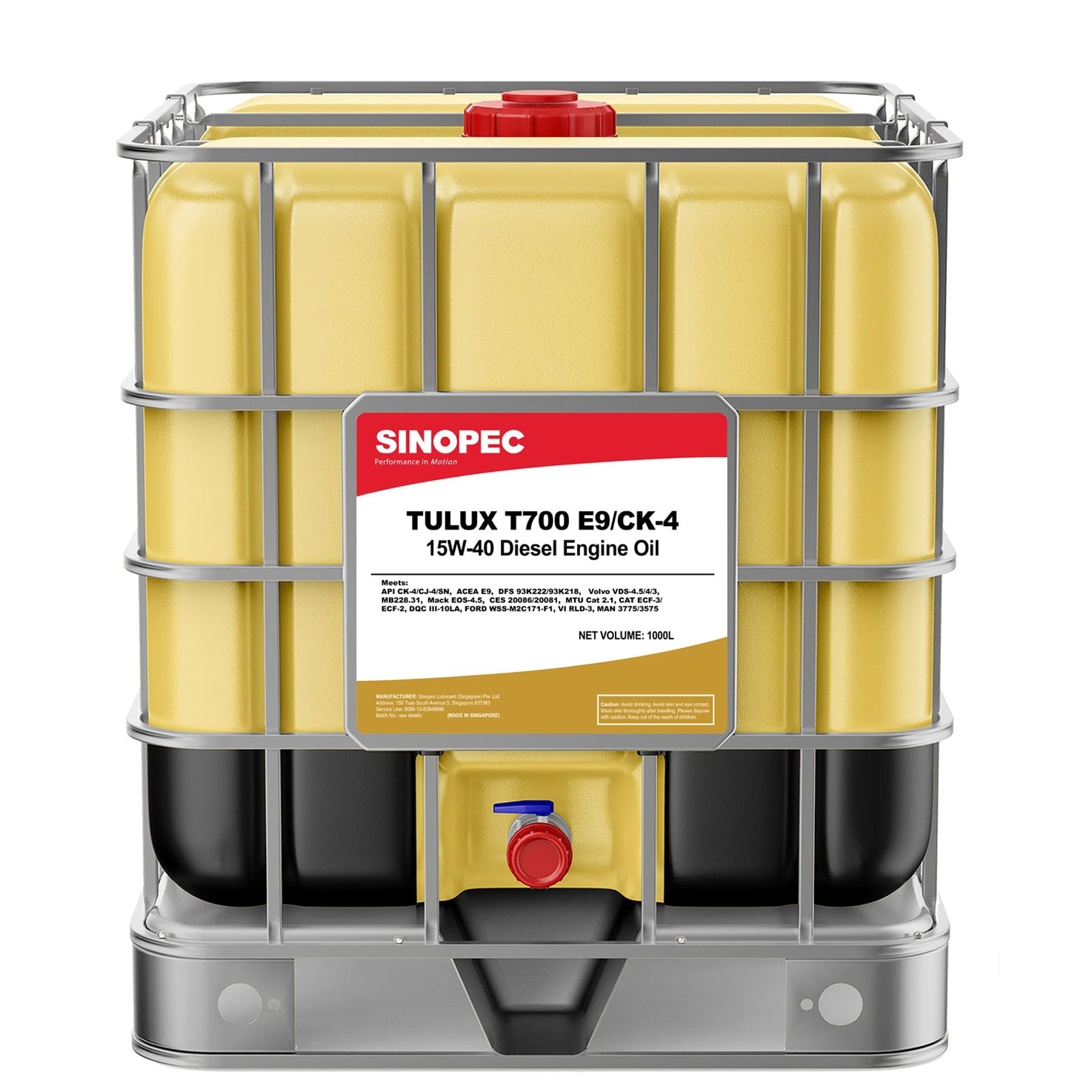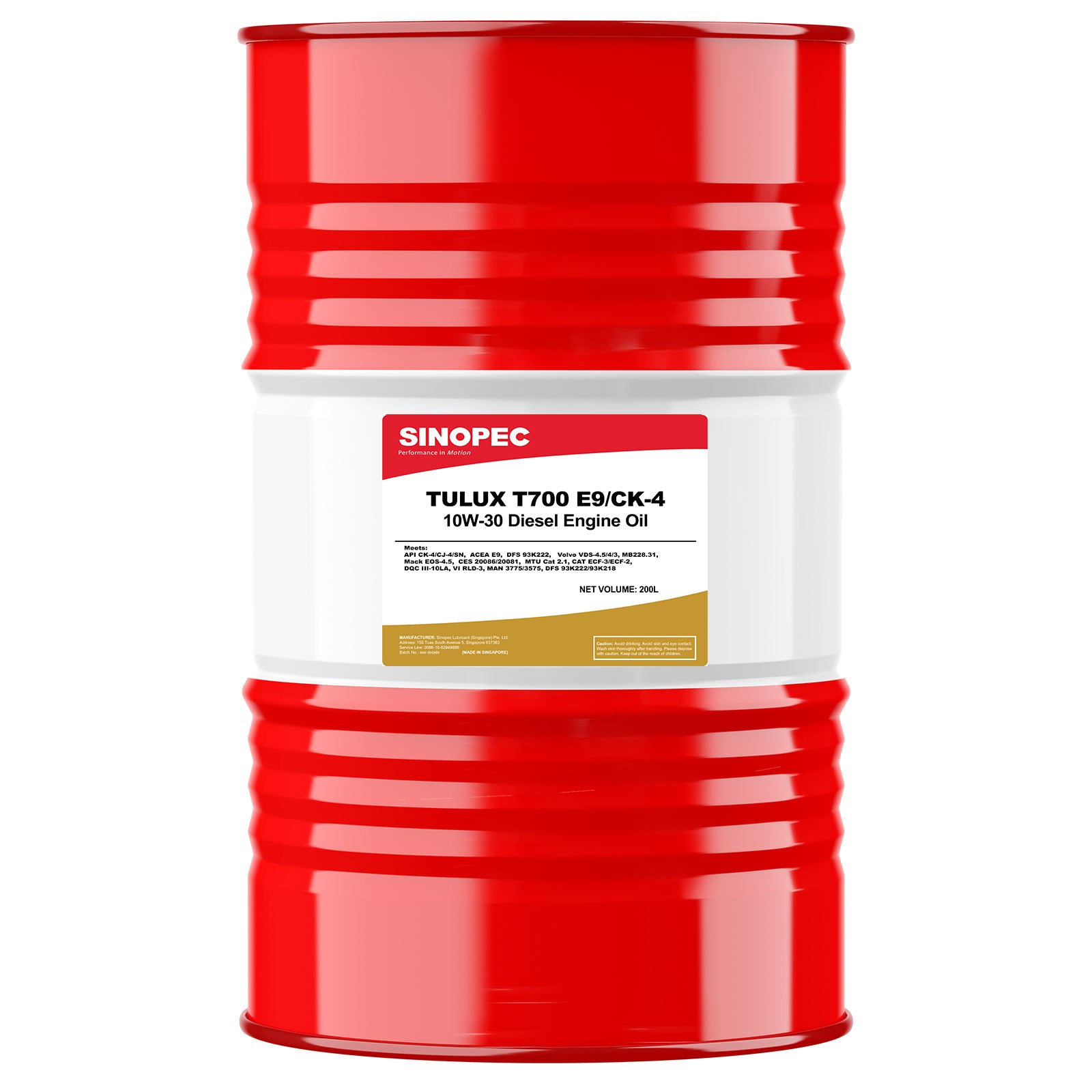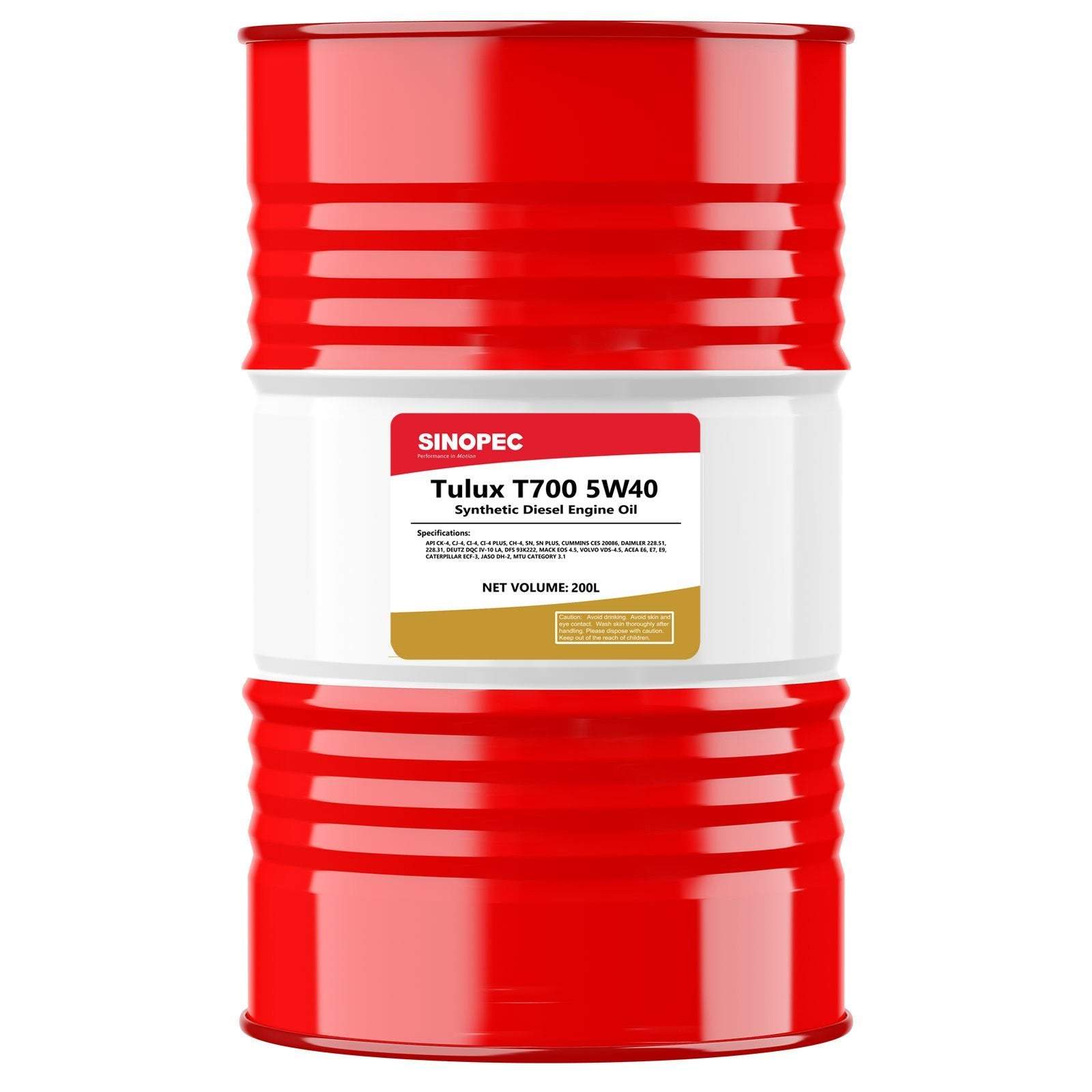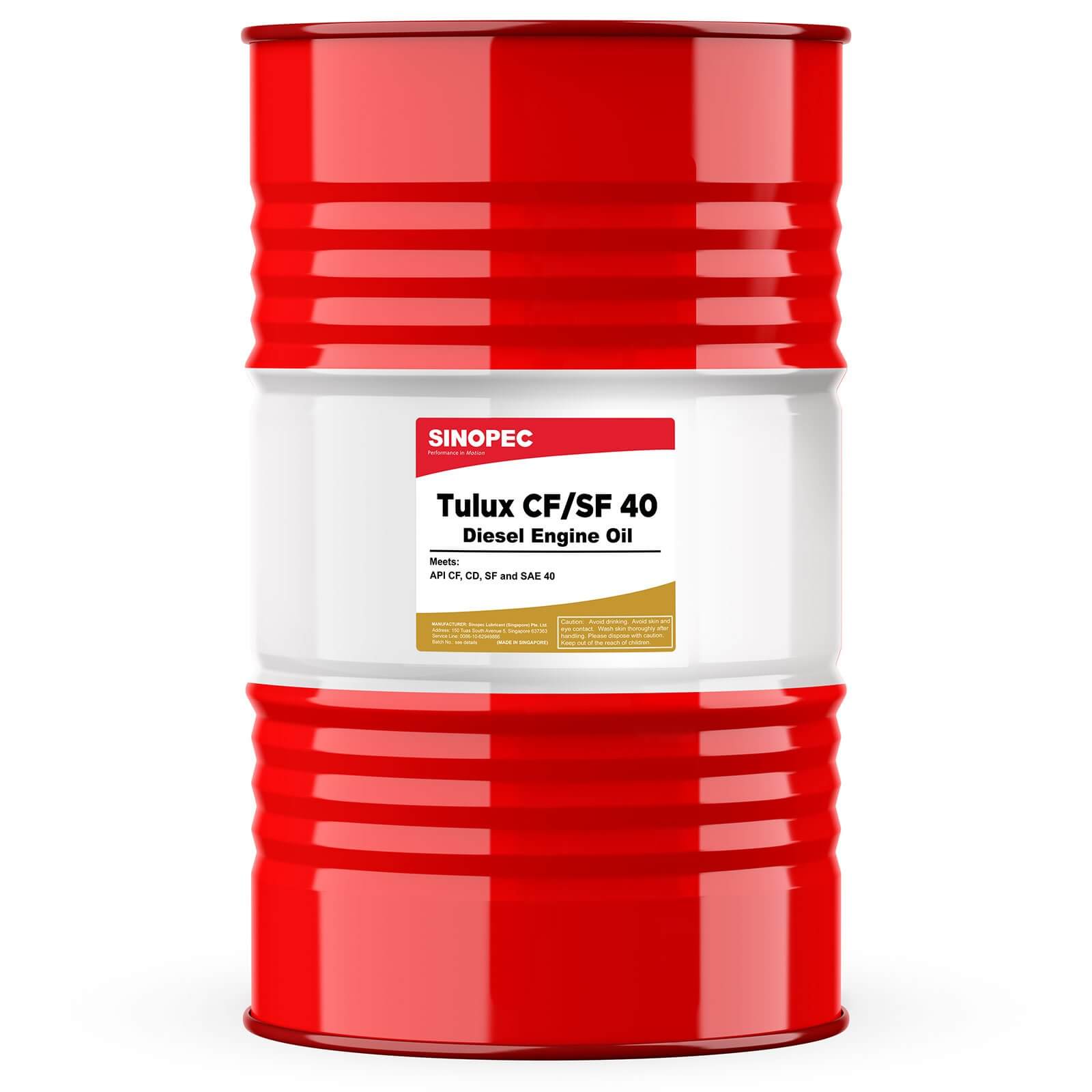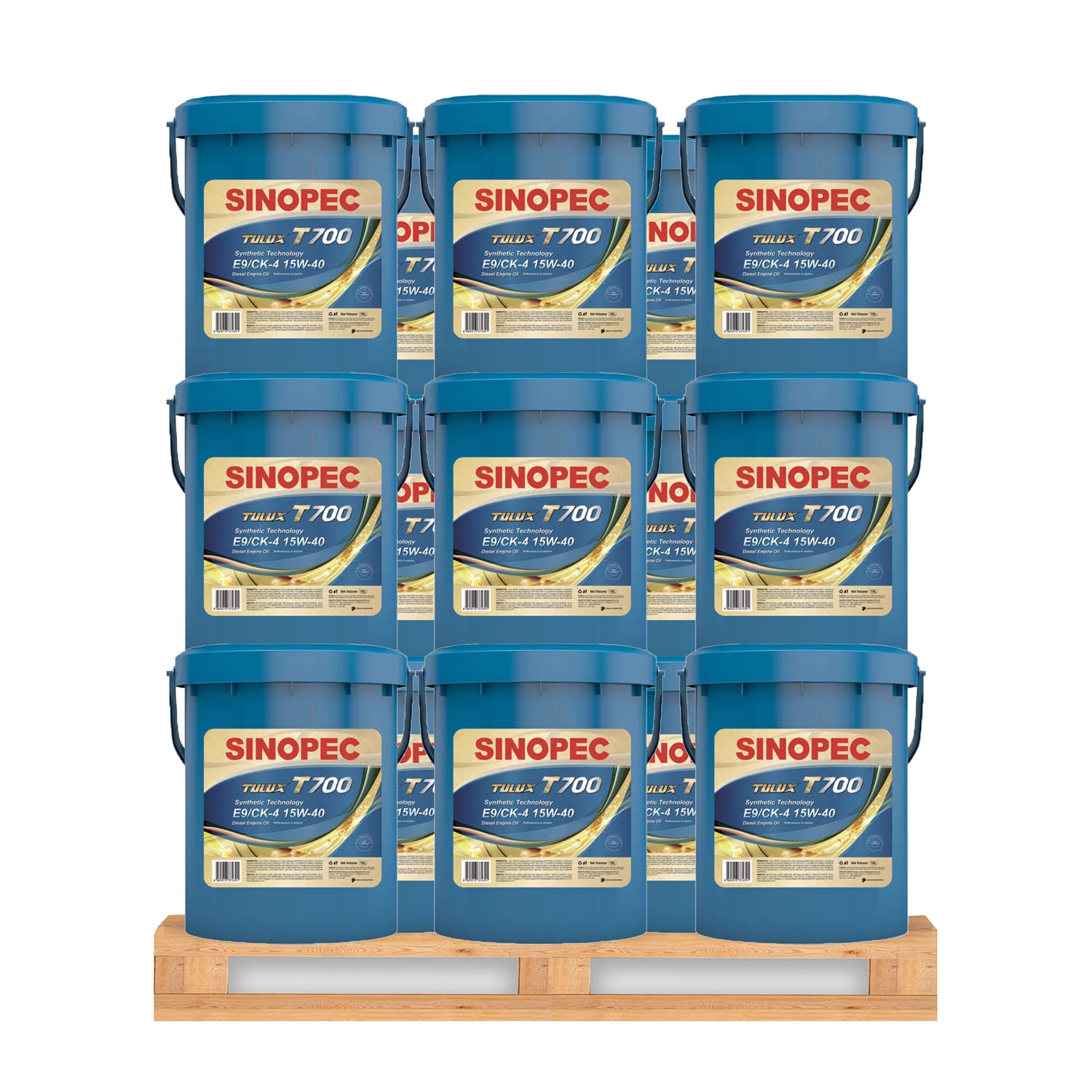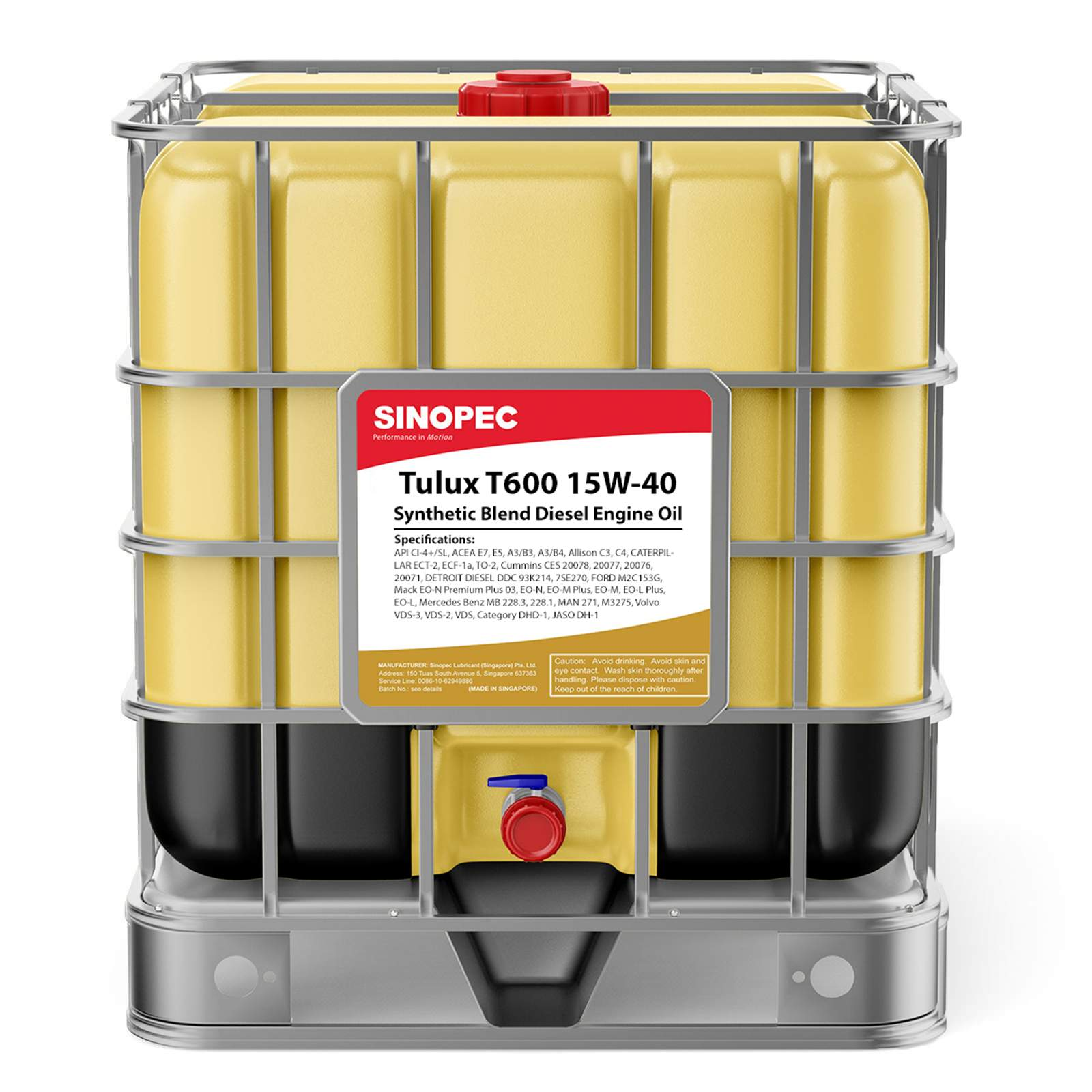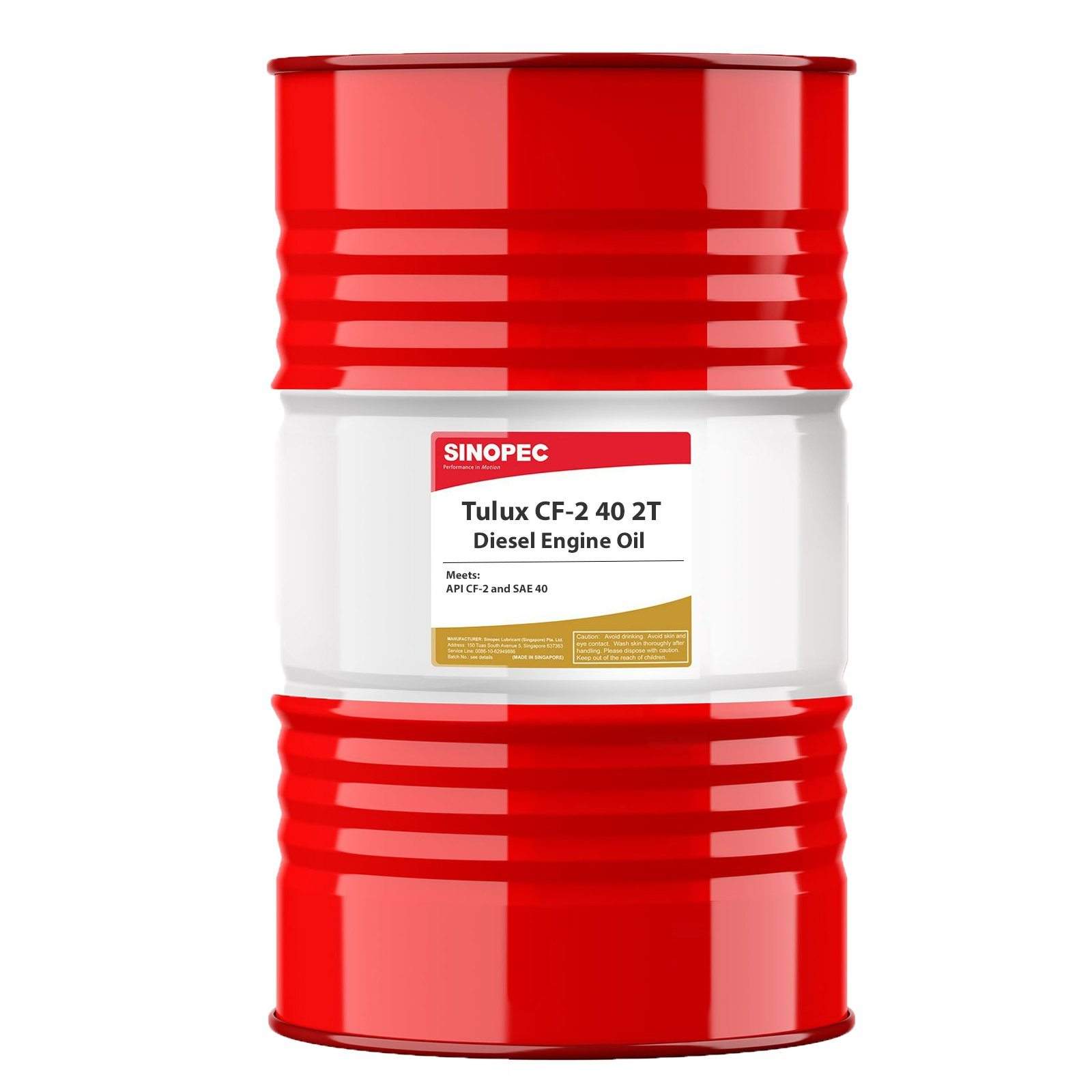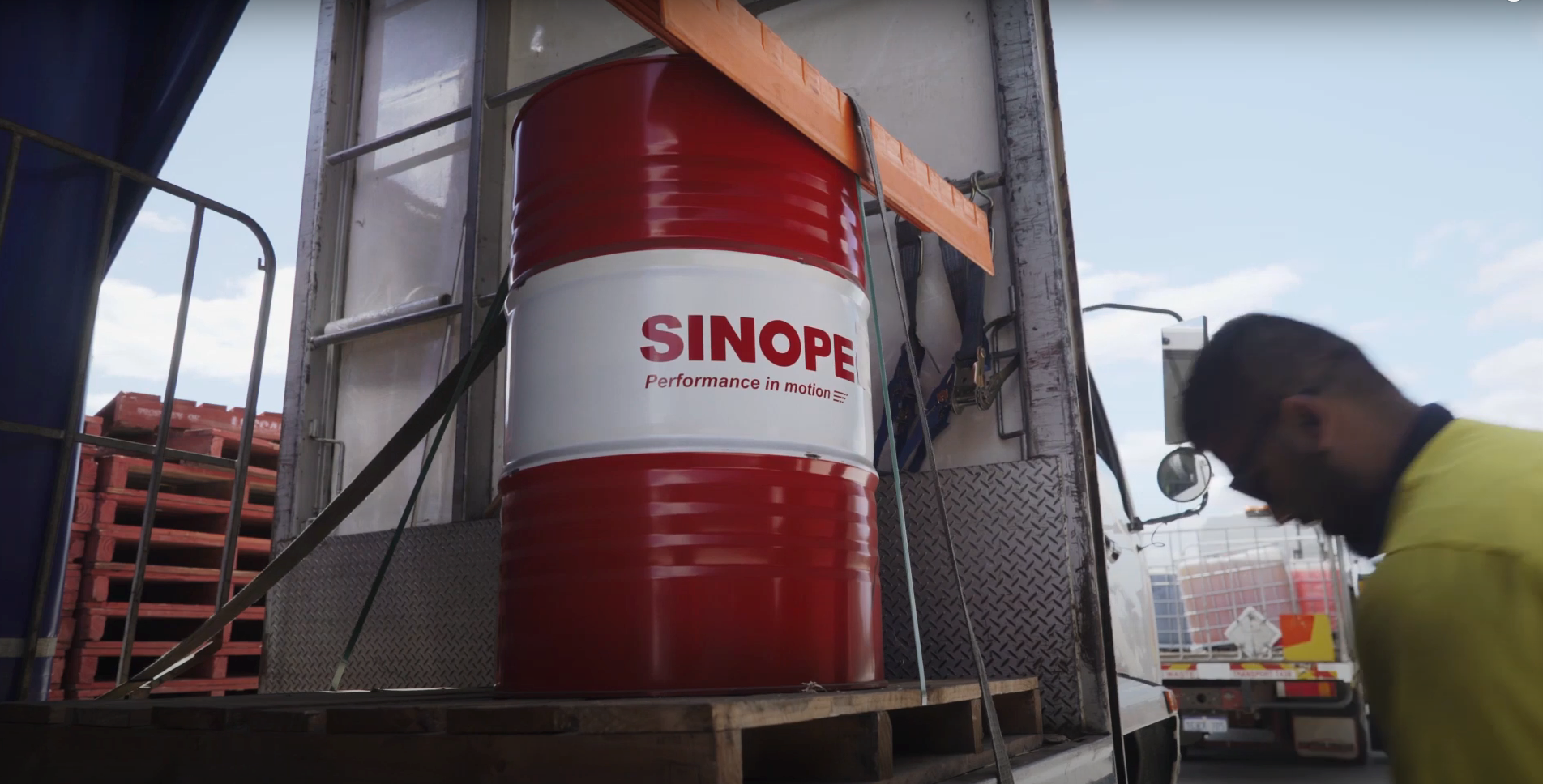Hydrocracking
A refining process in which a heavy oil fraction or wax is treated with hydrogen over a catalyst under relatively high pressure and temperature to give products of lower molecular mass.
Hydrodesulphurisation
The removal of sulphur from sulphur containing hydrocarbon molecules in petroleum distillates and residues by the action of hydrogen under elevated temperature and pressure over a catalyst.
48
Hydrodynamic Lubrication
A system of lubrication in which the shape and relative motion of the sliding surfaces causes the formation of a fluid film having sufficient pressure to separate the surfaces. This regime provides the best lubricating conditions when the two moving surfaces are completely separated by a relatively thick film of lubricant.
Hydrodynamics
The science concerned with study of liquids in motion.
Hydrofinishing
Catalytic hydrofinishing has replaced the acid treating of LVI and MVI base oils to a large extent. Improved colour, oxidation and colour stability and a reduction in polycyclic aromatic content are achieved by the process which involves the contacting of hydrogen over a catalyst at elevated temperature and pressure. Also applied to paraffin and microcrystalline waxes.
Hydrogenation
The chemical addition of hydrogen to a material. In non-destructive hydrogenation, hydrogen is added to a molecule only if, and where, unsaturation with respect to hydrogen exists. In destruction hydrogenation, the operation is carried out under conditions that result in rupture of some of the hydrocarbon chains (cracking); hydrogen is added where the chain breaks have occurred.
Hydrokinetics
The same as hydrodynamics.
49
Hydrostatics
The science that deals with the characteristics of liquids at rest.
Hydrotreating
This is a term for a process by which product streams may be purified and otherwise be brought up to marketing specifications as to odour, colour, stability etc. Hydrotreating , for the removal of sulphur, is the major treating process in refineries. Cracked streams could be saturated and stabilised by converting olefins to paraffins and lubricating oils could be upgraded with respect to colour, oxidation stability and sulphur content, albeit under more severe treating conditions. The process involves hydrogen under suitable temperature and pressure and a catalyst.
Hydrolytic Stability
The ability of additives and certain synthetic lubricants to resist chemical decomposition in the presence of water.
Hypoid Gear
A system of gears for transmitting motion at an angle in which the axis of the pinion does not intersect the axis of the main gear wheel.
Hypoid Gear Lubricant
A gear lubricant having extreme pressure characteristics for use with a hypoid type of gear as in the differential of an automobile.
HVI
High Viscosity Index, typically from 80 to 110 VI units.
50
ICOMIA
International Council of Marine Industry Associations.
IDI
Indirect Injection (Diesel).
IEC
International Electro-Technical Commission.
ILMA
Independent Lubricant Manufacturers Association.
ILSAC
International Lubricants Standardization and Approval Committee.
Incompatibility
Incompatibility occurs when a mixture of two lubricants results in physical properties or performance markedly inferior to those of the individual products. Performance or properties inferior to one of the products but superior to the other may be due to simple mixing and is not considered evidence of incompatibility.
Inhibitor
Any substance which slows or prevents chemical reaction or corrosion.
51
Initial Boiling Point
According to ASTM Method D 86, the recorded temperature when the first drop of liquid falls from the end of the condenser.
Ink Oil
Any of the petroleum oils used as carriers for the pigment used in making printing inks.
In-line Engine
An internal combustion engine in which the cylinders are arranged in line in a single bank.
Insulating Oil
An oil used in circuit breakers, switches, transformers, and other electrical apparatus for insulating, and/or cooling. In general, such oils are well-refined petroleum distillates of low volatility, with high resistance to oxidation and sludging.
Intercooler
A device used in a multi-stage compressor to cool the air between successive compressions.
Interfacial Tension (I.F.T)
The energy per unit area present at the boundary of two immiscible liquids. It is commonly measured as the force per unit length necessary to draw a thin wire or ring through the interface.
Internal Combustion Engine
An engine which is powered by fuel burned inside the engine itself.
52
Internal Gear
A system of gears in which the pinion meshes with a disk that has teeth cut on its inside.
Involute
The curve that is traced by a point on a thread kept taut as it is unwound from another curve.
IP
Institute of Petroleum.
ISO - International Standards Organisation
This organisation which is worldwide in scope sets standards and classifications for lubricants. An example is the ISO viscosity grade system.
ISO-Viscosity Grade (VG) System
The ISO viscosity classification system, is an international system approved by the International Standards Organisation, for classifying industrial lubricants according to viscosity. Each ISO viscosity grade number designation corresponds to the mid-point of a viscosity range expressed in mm2/s at 40C.
Isothermal
Relating to changes in volume or pressure which occur under conditions of constant temperature.
Jack
A device, often hydraulically operated, for moving a heavy load over a short distance.
53
JAMA
Japanese Automobile Manufacturers Association.
JASO
Japanese Automobile Standards Organization.
JIS
Japanese Industrial Standards.
JSAE
Society of Automotive Engineers, Japan.
Journal Bearing
A sliding type of bearing in conjunction with which a journal operates. In a full or sleeve type journal bearing, the bearing surface is 360° in extent. In a partial bearing, the bearing surface is less than 360° in extent.
K Factor
A factor used by roller bearing manufacturers which relates to the type of grease used for bearing lubrication.
Kinematic Viscosity
A definition of viscosity commonly used by lubricant manufacturers. It is equal to the dynamic viscosity of a liquid divided by its density. In a c.g.s. system, the standard unit of kinematic viscosity is the stoke and is expressed in sq. cm. per. sec.
See also Absolute Viscosity, Dynamic Viscosity and Viscosity.
54
Knock
The noise associated with the premature ignition of the fuel-air mixture in a combustion chamber; also known as detonation or pinking.
Kerosine
Any petroleum product with a boiling range between the approximate limits of 140 C and 270 C which satisfies specific quality requirements.
Lacquer
A hard, shiny, transparent surface coating usually found in engines and derived from a deposit resulting from the oxidation and polymerization of fuels and lubricants when exposed to high temperatures. Similar to but harder than varnish.
Lard Oil
An animal oil prepared from chilled lard or from the fat of swine.
Laws of Friction
The first law of friction states that the friction between two surfaces is independent of the area of contact. The second law of friction states that the friction between two surfaces is proportional to the load exerted on the surfaces.
Lead Naphtenate
A lead soap of naphthenic acid that is soluble in mineral oils. Used mainly to impart extreme pressure properties to lubricating oils and greases.
55
Linear Actuator
In hydraulics, a device which converts fluid pressure into linear movement.
Line of Contact
In gears, the area through which one gear tooth transfers motion and power to another.
Liquified Petroleum Gas (LPG)
Light hydrocarbon material, gaseous at atmospheric temperature and pressure, held in the liquid state by pressure to facilitate storage, transport, and handling. Commercial liquefied gas consists essentially of propane, butane, or mixtures thereof.
Liquefied Natural Gas (LNG)
Similar to LPG but consisting of lighter hydrocarbons, such as methane and ethane.
Lithium Base Grease
A product prepared from a lubricating fluid thickened with lithium soap. Lithium base grease resists both heat and moisture.
Litre
The primary standard of capacity in the metric system, equal to the volume of one kilogram of pure water at maximum density, at approximately 4°C, and under normal atmospheric pressure.
56
Load Carrying Capacity
A qualitative term used to describe the ability of a lubricant to resist film rupture and protect against wear and surface destruction under conditions of high speeds, high loads, high temperatures, or combinations thereof.
Load- Wear Index (LWI), formerly called Mean Hertz Load
A measure of the relative ability of a lubricant to prevent wear under applied loads; calculated from the loads applied and corrected for elastic deformation of the balls under static loading and for the size of the wear scar. Formerly called Mean Hertz Load.
Low Speed Diesel Engine
A diesel engine, like that used to power marine transport, which operates at speeds of less than 350 rpm.
Low Viscosity Index (LVI)
Low viscosity index, that is, having a viscosity index of less than about 30.
LRI
Lubricants Review Institute.
LTMS
Lubricant Test Monitoring System.
57
Lubricant
Any substance interposed between two surfaces in relative motion for the purpose of reducing the friction between them. Less exactly, any substance interposed between two surfaces in relative motion to facilitate their action.
Lubricating Grease
A solid to semifluid product consisting of dispersion of a thickening agent in a liquid lubricant. Other ingredients for imparting special properties may be included.
Lubricant Monitoring
Regular sampling and testing of lubricants in service to evaluate the condition of the oil and give information about the state of the machinery it is lubricating.
Lubrication
Any procedure which reduces the friction between two moving surfaces.
LVI
Low Viscosity Index, typically below 40 VI units.
Mean Hertz Load
See Load Wear Index (LWI).
Metal Deactivator
A fuel or lubricant additive, which converts into an inactive form, the traces of metal (such as copper in fuels) and metal surfaces (such as copper in fuel lines) which, in the absence of the deactivator would catalyse gum formation and other oxidation.
58
Mechanical Stability
The ability of a grease to resist a breakdown in its structure when mechanically worked.
Medium Speed Diesel Engine
A diesel engine, like that used for electricity generation, which operates at speeds between 350 and 1,250 rpm.
Metal Deactivator
An organic type of additive having the property of suppressing the catalytic action of metal surfaces and traces of metallic materials exposed to petroleum products which, in the absence of the deactivator, would catalyze gum formation and other oxidation. Mid-Continental Crude
Petroleum oil obtained from the central regions of the United States (principally Oklahoma, Kansas, and North Texas), usually having characteristics between those of Pennsylvania and coastal oils.
Middle Distillate
One of the distillates obtained between kerosene and lubricating oil fractions in the refining processes. These include light fuel oils and diesel fuel.
MIL Spec
Military specification; a guide in determining the quality requirements of products used by the military services, published by the United States Department of Defence.
59
Mineral Oil
Oils derived from a mineral source, such as petroleum, as opposed to oils derived from plants and animals.
Mircoemulsion
An emulsion of oil in water with emulsion particle size so small that the emulsion appears translucent to transparent.
Mixed Base Grease (mixed soap grease)
A grease made by co-crystallisation of two or more metallic soaps usually lithium and calcium.
Mixed Lubrication
The lubrication regime which exists when moving surfaces are separated by a continuous film of lubricant with a thickness comparable to the roughness of the surfaces.
Molybdenum Disulphide
A chemical compound of molybdenum and sulphur which has excellent properties as a solid lubricant due to the molecular structure of the particles.
MON
Motor Octane Number
Monograde
An oil with a viscosity which satisfies the requirements of only one grade of the SAE grading system.
60
Motor Method – Motor Octane Number (MON)
The octane number of a motor gasoline determined in a special laboratory test engine under ‘high engine severity’ conditions, giving a measure of the ‘high speed knock’ properties of the gasoline.
MSDS
Material Safety Data Sheet.
MTAC
Multiple Test Acceptance Criteria.
MTBE
Methyl Tertiary Butyl Ether.
Multigrade Oil
Engine oil that meets the requirements of more than one SAE viscosity grade classification and may therefore be suitable for use over a wider temperature.
Multipurpose Grease
A lubricating grease suitable for a variety of applications, such as chassis, wheel bearings, universal joints, and water pumps on automotive equipment; usually lithium–based.
Multi-stage Compressor
A machine which essentially consists of several linked compressors, one feeding compressed gas to the next for further compression.
61
MVI
Medium viscosity index, that is, having a viscosity index of between about 30 and about 85.
MVMA
Motor Vehicle Manufacturers Association.
NAFTA
North American Free Trade Agreement.
Naphthene
One of a group of cyclic hydrocarbons, also termed cycloparaffins or cycloalkanes. Polycyclic members are also found in the higher boiling fractions. The general formula for naphthenes is CnH2n.
Naphthenic
Having the characteristics of naphthenes, saturated hydrocarbons whose molecules contain at least one closed ring of carbon atoms.
Naphthenic Base Oils
A characterization of certain petroleum products prepared from naphthenic type crudes (crudes containing a high percentage of ring type hydrocarbon molecules).
Neatsfoot Oil
A pale yellow animal oil made from the feet and shinbones of cattle.
62
Needle Bearing
A bearing comprising rolling elements in the form of rollers, which are relatively long compared to their diameter.
Neutral Oil
Light overhead cuts of lubricants stocks. Neutral oils have been the basis for most commonly used automotive lubricants.
Neutralisation Number
A term still used in the petroleum industry, but rapidly becoming obsolete in the lubrication field.
See also Acid, Strong Acid, Strong Base, Total Acid, and Total Base Numbers.
Neutralisation Value
An indication of the acidity of an oil; the number is the mass in milligrams of base expressed as potassium hydroxide (KOH) required to neutralise 1 gram of oil.
NLGI
An abbreviation for “National Lubricating Grease Institute”. A technical organisation serving the grease industry.
NMMA
National Marine Manufacturers Association.
63
Non-soap Thickener
A substance such as clay, silica gel, carbon black, or any of several specially treated or synthetic materials that can be either thermally or mechanically dispersed in liquid lubricants to form lubricating grease. Also called synthetic thickener. Certain types are called inorganic thickeners.
NVMA
National Vehicle Manufacturers Association.
Octane Number
A term numerically indicating the relative antiknock value of a gasoline. The octane number of a gasoline depends on its hydrocarbon composition, and is improved by the addition of antiknock compounds.
OECD
Organization Economic Cooperation and Development.
OEM
Original Equipment Manufacturer.
Oil Groove
One of the shallow grooves cut into the rubbing faces of a bearing shelf to improve the distribution of oil over the shaft and bearings. The grooves are connected with an oil supply hole or cup and act like ducts in conveying the oil to the various parts of the bearings.
64
Oil Immersed Brakes
An automotive braking system which is installed in the vehicle gearbox or rear axle, rather than at the wheels.
Oiliness
1.That characteristic of a liquid which is responsible for the degree of friction between two surfaces which cannot be accounted for on the basis of viscosity alone.
2. The ability of a lubricating oil to orient itself on bearing surfaces so as to form new surfaces with a low coefficient of static friction.
Oil Mist Lubrication
A system of lubrication used in some gearboxes in which the lubricant is atomised and sprayed into the gearbox in a stream of dry compressed air.
Oil Ring
A loose ring, the inner surface of which rides a shaft or journal and dips into a reservoir of lubricant from which it carries the lubricant to the top of a bearing by its rotation with the shaft.
Oil Separation
In greases, the separation of the base oil from the thickener. OLAP
Oil Labelling Assessment Program.
Open Gears
A combination of gears that is not enclosed in a housing.
65
ORI
Octane Requirement Increase.
Outer Ring
The part of a rolling bearing which is fixed to the bearing housing.
Oxidation Inhibitor
A substance added in small quantities to a petroleum product to increase its oxidation resistance, thereby lengthening its service or storage life; also called an anti-oxidant.
Oxidation Stability
The resistance of a petroleum product to oxidation, hence a measure of its potential service or storage life. The available tests all simulate service conditions on an accelerated basis.
Pad Lubrication
A system of lubrication in which the lubricant is delivered to a bearing surface by a pad of felt or similar material.
PAH
Poly-Aromatic Hydrocarbons.
Pale Oil
A base or process oil refined until its colour, by transmitted light, is straw to pale yellow.
PAN
Phenyl-Alpha-Naphthylamine, a commonly used antioxidant.
66
PAO Poly-Alpha-olefin.
PAPTG
Product Approval Protocol Task Group.
Paraffin
An alternative term for alkane, no longer considered correct terminology.
Paraffin Base Oil
A characterization of certain petroleum products prepared from paraffinic type crudes (crudes containing a high percentage of straight chain aliphatic hydrocarbon molecules). Lubricating oils made from these crudes are normally distinguished from similar oils from other crudes
(both oils equally well refined) by higher API gravity and higher viscosity index.
Paraffinic
Having the characteristics of paraffins, i.e. saturated hydrocarbons of open chain structure.
Paraffinic Wax
Hydrocarbons of solid consistency having a relatively pronounced crystalline structure, extracted from certain petroleum distillates. Refined paraffin wax has a very low oil content, is white in colour, with some degree of translucency, almost tasteless and odourless and slightly greasy to the touch.
67
Pascal’s Law
A liquid in an enclosed container transmits pressure undiminished in all directions and acts with equal force on equal areas.
P/c Ratio
A factor used by roller bearing manufacturers to help with the selection of a suitable bearing lubricant.
PCA
Polycyclic Aromatic.
PCB
Poly-Chlorinated Biphenyl.
Penetration or Penetration Number
A measure of the hardness and consistency of bitumen and lubricating greases in terms of the distance in tenths of a millimetre by which a weighted special needle or cone will penetrate the sample in 5 seconds, the temperature, unless otherwise stated being 25C. The softer the consistency, the higher the penetration number
See also Unworked Pentration and Worked Penetration.
Penetrometer
A device which is used to measure the consistency of a grease. It is a cone of specified size and weight which is allowed to sink into the grease under its own weight.
68
Pensky-Martens Closed Cup (PMCC)
The apparatus for determining the closed flash point of fuel oils. Lubricating oils and other petroleum products.
Performance Test
A method of testing lubricants in which the conditions under which the lubricant is expected to operate are simulated as accurately as possible. Tests are usually run at unusually high levels of severity.
Peroxide Destroyer
An anti-oxidant that works by reacting with peroxides, blocking their ability to promote oxidation reactions.
Petrolatum
A jelly-like product obtained from petroleum and having a microcrystalline structure. Often used in rust preventives. Also called petroleum jelly.
Pinion
The smaller gear wheel of a pair.
Piston
A sliding cylinder fitting closely within a cylindrical chamber along which it moves to and fro by or against pressure.
69
Piston Pump
A type of pump used in hydraulic systems which pumps fluid by means of reciprocating pistons moving in cylinders.
Piston Rings
A springy metal ring which seals the gap between a piston and its cylinder wall.
Pitch
In gears, the distance between identical points on adjacent gear teeth on the same wheel.
Pitch Circle
A curve connecting the mid-points of contact of all the teeth on a gear wheel.
Pitch Line
A line on a gear wheel tooth marking the mid-point of its contact with a meshing tooth.
Pitch Line Velocity
The linear velocity with which the pitch line of a gear wheel moves.
Pitting
In gears, a type of wear in which cracks develop in gear teeth because of metal fatigue caused by overloading.
Plain Bearing
The simplest kind of bearing which consists of two flat surfaces moving relative to one another, distinguished from tapered land, tilting pad, or anti-friction bearings, etc.
70
Poise
The standard unit of absolute viscosity in the c.g.s. system expressed in dyne sec. per sq. cm.
Polymer
A chemical compound of large molecular size which is built up from numerous smaller molecules linked together
Positive Displacement Compressor
A machine that achieves compression by trapping a volume of gas and mechanically reducing the space it occupies.
Pour Point
The pour point of a lubricant is the lowest temperature at which the lubricant will pour or flow when it is chilled without disturbance under specified conditions.
Pour Point Depressant
An additive which lowers the pour point of petroleum products by reducing the tendency of the waxes present to coagulate into a solid mass.
Pour Stability
The ability of a pour depressed oil to maintain its original ASTM pour point when subjected to storage at low temperature approximating winter conditions.
Power Factor
A measure of the dielectric loss, or ability to perform as an electrical insulating oil.
71
Precipitation Number
The number of millilitres of precipitate formed within 10 ml of lubricating oil is mixed with 90 ml of petroleum naphtha and centrifuged under definitely prescribed conditions. The precipitation number should indicate the amount of the asphaltic bodies dissolved in the lubricating oil, although a certain amount of paraffin bodies may separate with the asphaltic bodies (ASTM Method D 91).
Pressure Lubrication
A system of lubrication in which the lubricant is pumped through pipes and channels to the surfaces to be lubricated.
Process Oils
A lube base stock that receives additional processing to impart a very specific hydrocarbon composition in addition to viscometrics. Process oils are not used as lubricants; they are used as chemical components in the manufacture of rubber, plastics, and other polymeric materials.
Pumpability (Lubricating Grease)
The ability of a lubricating grease to flow under pressure through the line, nozzle, and fitting of a grease dispensing system.
PVC
Polyvinyl chloride.
QA
Quality Assurance.
72
QPL
Qualified Product List (military listing).
(R+M)/2
Research Octane Number plus Motor Octane Number, divided by 2. Used now as general measure of road octanes of gasoline.
R&O
An additive inhibitor package which contains Rust and Oxidation Inhibitors.
Raceway
A track on the inner or outer of a rolling bearing along which the rolling elements travel.
Rack and Pinion
A gear system used for converting rotary motion into linear motion or vice versa. It consists of a toothed bar (the rack) which meshes with a toothed wheel (the pinion).
Radial Piston Pump
A type of pump used in hydraulic systems which contains a number of reciprocating pistons which move in cylinders arranged in a star formation around a rotating shaft.
Raffinate
A fraction obtained during the manufacture of lubricating oils from crude petroleum; it consists mainly of alkanes and cycloalkanes.
73
Reciprocating Compressor
A machine which compresses gases by the action of a piston moving in a cylinder.
Reciprocating Piston Engine
A type of internal combustion engine in which pistons move to and fro in engine cylinders. The pistons are driven by the pressure generated when gases are burned in the cylinders.
Reclaimed Oil
A lubricating oil that, after undergoing a period of service is collected, reprocessed, and sold for reuse.
Red Oil
The term is now used to describe any oil of red colour, regardless of refining process.
Redwood Viscometer
Standard British viscometer. The number of seconds required for 50 ml of an oil to flow out of a standard Redwood viscometer at the definite temperature (IP Method 70). Instrument is available in two sizes: Redwood No. 1 and No. II. When the flow time exceeds 2,000 sec, the No. II must be used.
Refractometer
An optical instrument that measures the refractive index of a metalworking fluid. Used to determine concentration.
74

